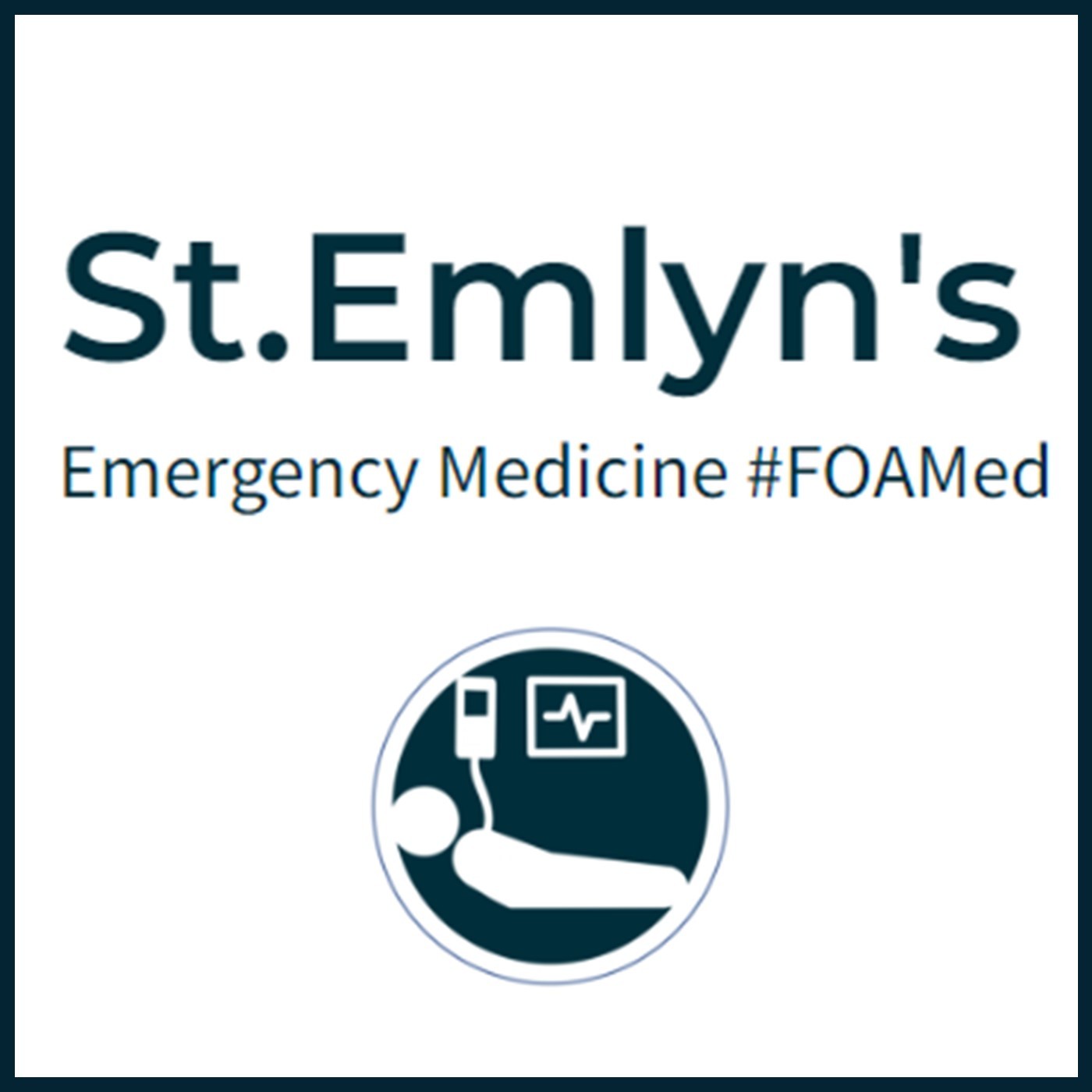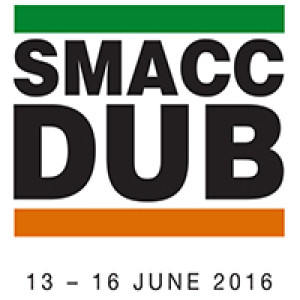
1.3M
Downloads
273
Episodes
A UK based Emergency Medicine podcast for anyone who works in emergency care. The St Emlyn ’s team are all passionate educators and clinicians who strive to bring you the best evidence based education. Our four pillars of learning are evidence-based medicine, clinical excellence, personal development and the philosophical overview of emergency care. We have a strong academic faculty and reputation for high quality education presented through multimedia platforms and articles. St Emlyn’s is a name given to a fictionalised emergency care system. This online clinical space is designed to allow clinical care to be discussed without compromising the safety or confidentiality of patients or clinicians.
Episodes

Sunday Jul 31, 2016
Sunday Jul 31, 2016
Effective Trauma Handovers: Best Practices and Key Considerations
Trauma handovers are critical transitions in patient care, transferring responsibility from pre-hospital teams to in-hospital teams. These moments are crucial for ensuring patient safety and the continuation of effective treatment. This summary explores the best practices for trauma handovers, focusing on preparation, timing, communication, and the integration of feedback.
Preparation: Utilizing Golden Time
Effective trauma handovers begin with thorough preparation. The period between receiving the notification of an incoming trauma patient and their arrival is often called "golden time." This time should be used to organize and prepare the multidisciplinary team, including in-patient specialists, ED staff, nurses, doctors, and radiologists. Key preparatory steps include:
- Role Allocation: Assign clear responsibilities, such as the trauma team leader, scribe, airway manager, and primary survey conductor. It is crucial to ensure that team members are both competent and confident in their assigned roles, as these attributes, while related, are distinct.
- Predictive Planning: Use pre-hospital information to anticipate the patient's needs. For instance, a report of a patient with a chest stab wound and hypotension suggests the need to prepare for a thoracotomy.
Timing and Coordination
Timing is essential in trauma care, particularly in avoiding early calls to the trauma team. At Southampton, the recommended practice is to call the team together approximately 15 minutes before the patient’s expected arrival, avoiding exact time estimates. This strategy helps maintain team readiness and focus. The risks of early calls include loss of focus due to prolonged waiting and the potential for team members to become distracted by other tasks.
Conducting the Team Briefing
A comprehensive and unified briefing is vital upon the trauma team’s assembly. This briefing should involve the entire multidisciplinary team, preventing any division into subgroups and ensuring that all members receive the same information. A good practice is for team members to introduce themselves using first names, which helps break down hierarchical barriers and fosters a collaborative environment. The briefing should also include a mission rehearsal, outlining the specific tasks and roles each member will perform upon the patient's arrival.
The Handover Process
The actual handover begins when the patient arrives. The in-hospital team leader should introduce themselves to the pre-hospital team and determine if the patient is stable enough for a hands-off handover. This approach, modeled after military practices, ensures that the handover is conducted calmly and clearly. If the patient is unstable, the pre-hospital team should continue leading the resuscitation until it is safe to hand over control.
A structured framework, such as AppMist (Age, Time of injury, Mechanism, Injuries, Signs, and Treatments), should be used to deliver concise and critical information during the handover. This approach ensures that only the essential information is communicated, focusing on the most pertinent details for the ongoing treatment.
Addressing Pre-Hospital Challenges
The pre-hospital environment is inherently stressful and challenging, with limited resources and a high cognitive load. Pre-hospital teams often face the dual pressures of managing critically ill patients and communicating effectively with the receiving hospital. It is crucial for in-hospital teams to recognize these challenges and refrain from criticizing or undermining pre-hospital efforts during the handover. Instead, the focus should be on receiving and clarifying the necessary information to continue patient care.
Pre-hospital teams should aim to deliver concise, relevant information during the handover. Ending the handover with a clear statement, such as "That completes my handover," followed by an offer to answer any urgent questions, helps ensure clarity and completeness.
Feedback and Continuous Improvement
Closing the feedback loop is an essential aspect of improving trauma care. Providing feedback to pre-hospital teams about patient outcomes helps refine their assessment and treatment strategies. This feedback should be delivered sensitively, acknowledging the emotional and high-pressure nature of pre-hospital work.
Constructive feedback should focus on confirming or refuting pre-hospital assessments and decisions, providing a learning opportunity for future cases. It is essential to approach feedback with empathy and professionalism, fostering a supportive environment for continuous improvement.
Controversial Aspects and Best Practices
Calling the Full Trauma Team: There is a debate over whether to always call the entire trauma team for every alert. At our hospital, we favor over-calling to ensure that all necessary resources are immediately available, even if it means releasing some staff after assessing the situation.
Pre-Hospital Requests for Specific Interventions: In-hospital teams must use their discretion when responding to pre-hospital requests for specific interventions or specialist involvement. Trust and familiarity with the pre-hospital team's capabilities influence these decisions. For example, while cardiothoracic surgeons are not standard members of our trauma team, they may be involved in cases of traumatic cardiac arrest with penetrating trauma.
Conclusion: A Framework for Effective Trauma Handover
Effective trauma handovers are essential for patient safety and optimal care. This process requires careful preparation, clear communication, and seamless coordination between pre-hospital and in-hospital teams. By adhering to standardized practices, fostering a collaborative environment, and integrating constructive feedback, healthcare providers can significantly enhance the quality of trauma care.
We encourage healthcare professionals to share their experiences and insights, contributing to a broader understanding of best practices in trauma handovers. Whether you are working in trauma centers, units, or in different healthcare systems worldwide, your input is invaluable in refining these critical processes.
Thank you for engaging with this discussion on the St Emlyns blog. We look forward to continuing this conversation and exploring ways to improve patient care in emergency medicine.

Friday Jul 08, 2016
Friday Jul 08, 2016
Enhancing Pre-Hospital to Hospital Handover: Insights from SMACC Dublin
The SMACC Dublin conference provided a valuable platform for discussing the crucial handover process from pre-hospital teams to hospital staff. This transition is essential for patient safety and continuity of care, as it involves conveying critical information from emergency responders to hospital-based healthcare professionals. The discussion at the conference highlighted several key issues, best practices, and strategies to improve this critical interface.
The Emotional Landscape and Communication Challenges
Dr. Natalie May, reflecting on her shift from hospital to pre-hospital care, emphasized the emotional challenges and the need for empathy and understanding between both teams. Pre-hospital providers often face a tense environment upon hospital arrival, with varying degrees of reception from the hospital team. This tension can arise from perceived disrespect or a lack of understanding of the pre-hospital team's challenges, which can complicate the handover process.
A significant issue in handover is the lack of structured communication. The fast-paced environment of the emergency department (ED) can pressure pre-hospital providers to quickly pass on patients and information, sometimes resulting in incomplete or rushed handovers. To address this, the use of structured communication tools like the AD MISSED acronym (Age, Date/Time, Mechanism of Injury, Injuries, Signs/Symptoms, Treatments, and Decisions) was recommended. This structure helps ensure that all essential information is conveyed systematically, minimizing the risk of information loss.
Best Practices for Handover
One highlighted best practice is the implementation of a clear and consistent protocol. For instance, a Texas hospital has adopted a "hands-off" period during handover, where the receiving team does not intervene until the pre-hospital team has completed their report. This approach helps maintain focus on the verbal communication of critical details without distractions, ensuring a comprehensive transfer of information.
The role of the trauma team leader is also critical. They act as the primary point of contact, receiving the handover and ensuring that all relevant team members understand the conveyed information. The trauma team leader is responsible for verifying the accuracy of the information, clarifying any uncertainties, and coordinating subsequent actions. This leadership role is crucial in maintaining a smooth and efficient handover process.
Overcoming Communication Barriers
Differences in communication styles and preferences between hospitals can pose challenges. The discussion emphasized the need for pre-hospital teams to be adaptable, potentially rehearsing handovers and using aids like whiteboards. Regular joint training sessions between pre-hospital and hospital teams were recommended to align expectations and familiarize each side with the other's protocols. The use of digital tools, such as secure messaging apps, can also facilitate better communication and continuity of care.
The physical environment during handover significantly impacts its effectiveness. A calm, organized setting with minimal interruptions is ideal for ensuring a thorough transfer of information. Designating a specific area for handovers and equipping it with necessary tools, such as a whiteboard and a scribe, can improve the clarity and accuracy of the communication.
The Importance of Feedback
Immediate feedback after handover is crucial for continuous improvement. It allows pre-hospital providers to understand the outcomes of their interventions and the patient's progression. This real-time feedback can highlight areas for protocol refinement and training. Additionally, formal long-term feedback mechanisms, such as follow-up meetings or debriefings, are vital for providing a complete picture of the patient's journey, helping both pre-hospital and hospital teams improve their practices.
Building a Culture of Respect and Understanding
A successful handover process is built on mutual respect and understanding between pre-hospital and hospital teams. Acknowledging the expertise and challenges faced by each group fosters a more cooperative and supportive environment. This respect is essential for enhancing patient care and ensuring a smooth transition from one care setting to another.
To build this culture of respect, regular interdisciplinary workshops and social events can help break down barriers and build rapport among healthcare professionals. Recognizing the unique pressures and responsibilities of each team member contributes to a more harmonious and effective handover process.
Conclusion: Towards a Seamless Continuum of Care
The discussions at SMACC Dublin underscored the importance of an effective handover in emergency medicine. By adopting structured communication protocols, ensuring clear leadership, and fostering a culture of continuous feedback and mutual respect, the gap between pre-hospital and hospital care can be bridged. The ultimate goal is to create a seamless continuum of care, where the transition between healthcare teams is smooth, efficient, and centered on the patient's best interests.
This integrated approach not only improves patient outcomes but also enhances job satisfaction among healthcare providers by reducing miscommunications and misunderstandings. The handover process is a critical component of patient care that requires ongoing attention and improvement.
In conclusion, effective handover practices are essential for ensuring patient safety and continuity of care. The insights from SMACC Dublin provide valuable guidance on refining these practices. By fostering a culture of learning, respect, and collaboration, healthcare providers can ensure that every patient transition is handled with the utmost professionalism and care.
